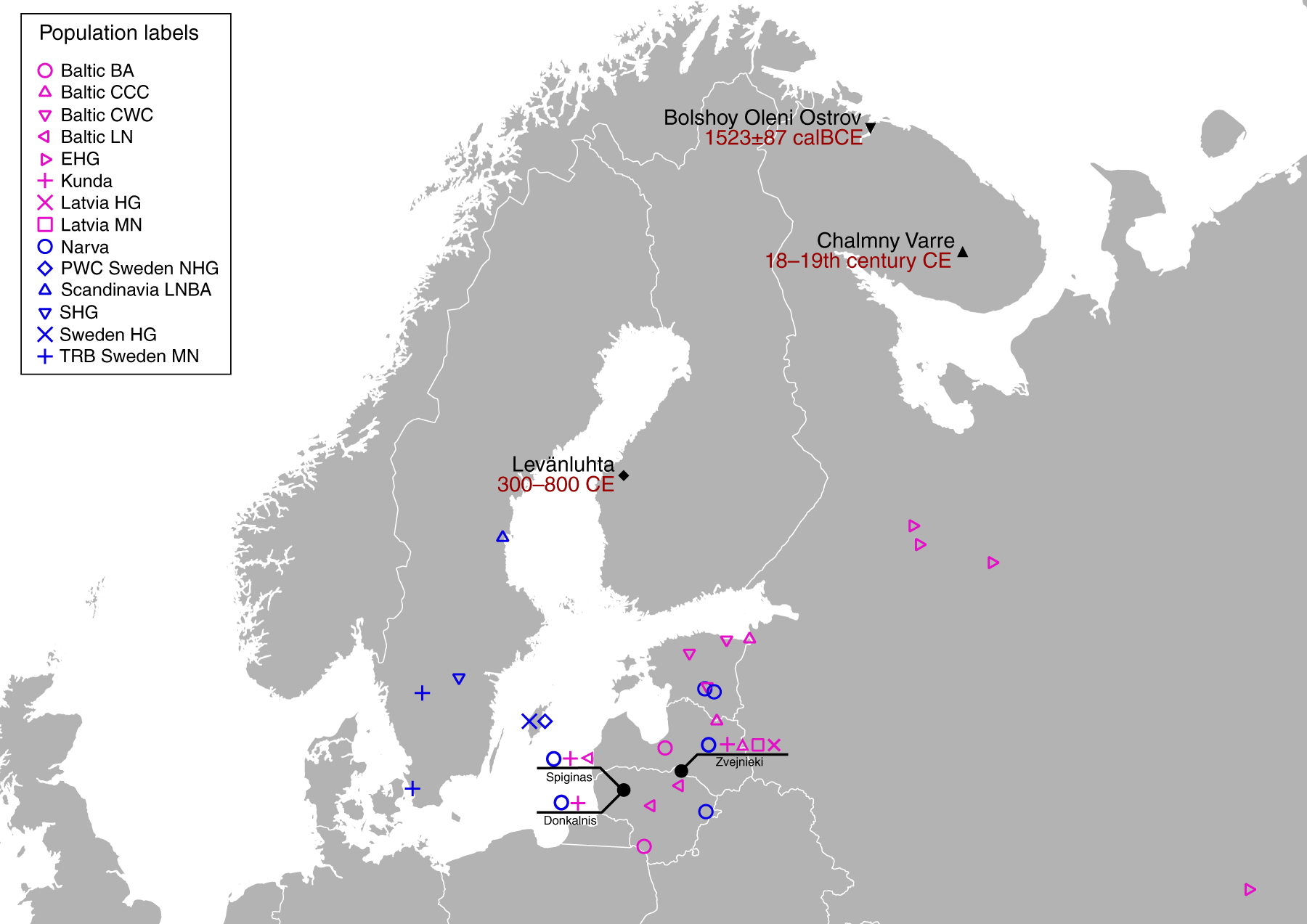Is Finnish DNA unique?

Do Finns have Neanderthal DNA
In Europe, Finns had the highest Neanderthal DNA rate with 1.2 percent. Utah residents with northern and western European roots came in at 1.17 percent. And Puerto Ricans had only 1.05 percent Neanderthal in them.
Why was Finland isolated
The ancestors of the modern Finns, once they arrived in this cold land thousands of years ago, remained relatively separate from even their closest European neighbors. Although modern travel and telecommunications have likely reduced this isolation, the remnants of it are still evident in the genetics.
Who are Finns genetically closest to
Estonians
The closest genetic relatives for Finns are Estonians (FST to Helsinki 40 and to Kuusamo 90) and Swedes (FST to Helsinki 50 and to Kuusamo 100).
Why does everyone have Finnish DNA
It is attributed to a population bottleneck among ancestors of modern Finns, estimated to have occurred about 4000 years ago, presumably when populations practicing agriculture and animal husbandry arrived in Finland.
Are Finnish people Slavic
No, Finns are not Slavic. They are a Finno-Ugric people. Their language is related to Estonian and Hungarian. A minority of people in Finland have Swedish as their native language.
Are Finns mostly blonde
Finland. The people of Finland have one of the highest concentrations of blond hair in the world. In large portions of Finland, 80% of the population has blond hair (and a full 89% of the population has blue eyes).
Do Finns have Siberian DNA
Siberian origins are still visible in the Sámi, Finns and other populations of the Finno-Ugric language family. “However, it has been mixed up with the European genome. Of all European populations, modern Sámi are the most evident representatives of the Siberian genome.
Why is Finnish so unique
The Finnish grammar and most Finnish words are very different from those in other European languages, because Finnish is not an Indo-European language. The two other national languages that are Uralic languages as Finnish are Estonian and Hungarian.
Who are Finns genetically related to
The closest genetic relatives for Finns are Estonians (FST to Helsinki 40 and to Kuusamo 90) and Swedes (FST to Helsinki 50 and to Kuusamo 100).
What are Finns genetically
The closest genetic relatives for Finns are Estonians (FST to Helsinki 40 and to Kuusamo 90) and Swedes (FST to Helsinki 50 and to Kuusamo 100). The FST values given here are actual values multiplied by 10,000.
How do Finnish people look
Common physical characteristics of Finnish people include ashy blond hair, blue almond-shaped eyes, small round noses, and round faces. Finnish people are stereotyped as being reserved, honest, modest, humble, polite, and resilient.
What are typical Finnish features
Common physical characteristics of Finnish people include ashy blond hair, blue almond-shaped eyes, small round noses, and round faces. Finnish people are stereotyped as being reserved, honest, modest, humble, polite, and resilient. These are, of course, just stereotypes.
What ethnicity are Finns
Finland is a relatively ethnically homogeneous country. The dominant ethnicity is Finnish but there are also notable historic minorities of Finland-Swedes, Sami and Roma people. As a result of recent immigration there are now also large groups of ethnic Russians, Estonians, Iraqis and Somalis in the country.
What is unique about Finnish people
Finns are generally kind and open-minded, even though they can be a bit shy at first. Families are usually small, with only one or two children. In the culture of Finland, people appreciate punctuality, good manners, and practicality.
What is the stereotype Finnish people
They are quite popular in Europe. People think that Finns are really shy introverts, who struggle to open up in front of strangers. It's always dark over there, and for 80% of the time, you can spot some snow outside.
Why are Finns so introverted
“Finland as a whole is easy to be thought of as introvert, and Finns are considered shy because our culture is one where we value private space very much,” Korhonen told Shanghai Daily on her recent book tour in Shanghai. “And we also give space to other people,” she added.
